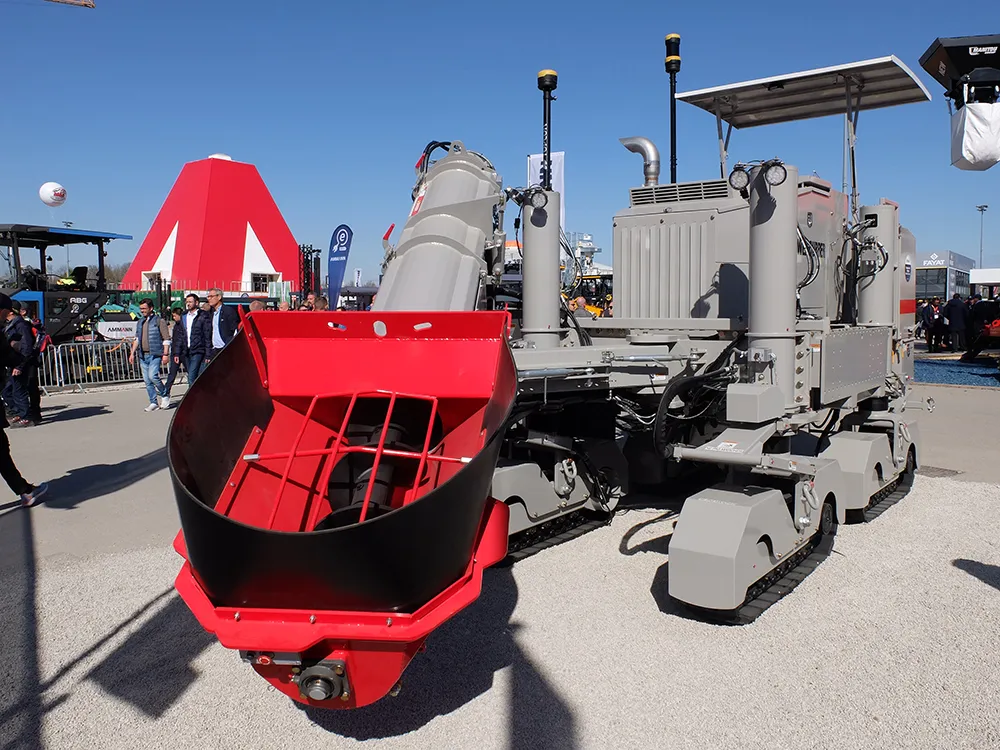Power Curbers is now offering the latest four-track version of its successful 5700 slipformer, the 5704-D MAX to the European market. This variant offers high stability and extra versatility, suiting the needs of European customers. The machine is available with a 3.7m auger, 6m belt and 8.5m belt. The conveyor options can be switched quickly from left to right due to a special dual-swinging mount. Transport is eased for the 8.5m conveyor option because it can be folded when required, with the optional aluminium canopy also folding quickly for transport.
A spokesperson for the firm said, “We can bolt a mold on either side of the machine and we can mount any mold from Power Curbers.”
The spokesperson commented that the machine retains the firm’s simple and compact design and said: “We’re still able to turn a tight radius even though it’s a four-track machine.”
The 5704-D MAX also features nine vibrators. It can be equipped with machine control technology from Leica Geosystems, Topcon or Trimble.
